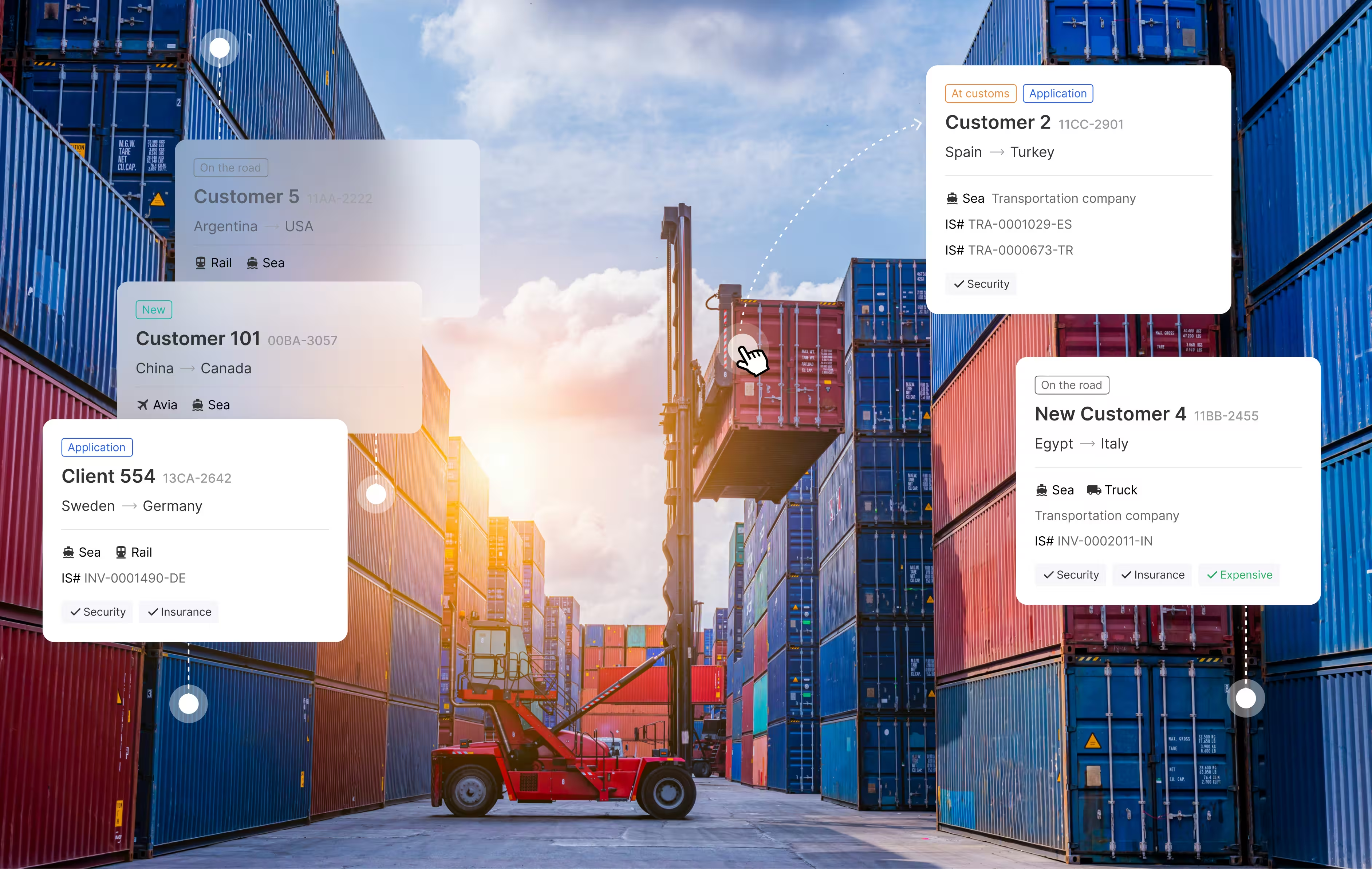
Our client is a small, almost family-run logistics company that ships cargo across the globe.
Together with our partners at FANS Development, we spent six months digitizing their entire workflow without breaking a single process their team relied on. The result was a custom ERP system that enabled them to handle 20% more orders while keeping full control of operations.
For a logistics manager, time is everything:
Calculate shipping options
Pick the best deal
Issue an invoice
And lock in a carrier
But shipping costs depend on a huge number of factors: route, transport type, carrier rates, currency fluctuations, tax rules, and more.
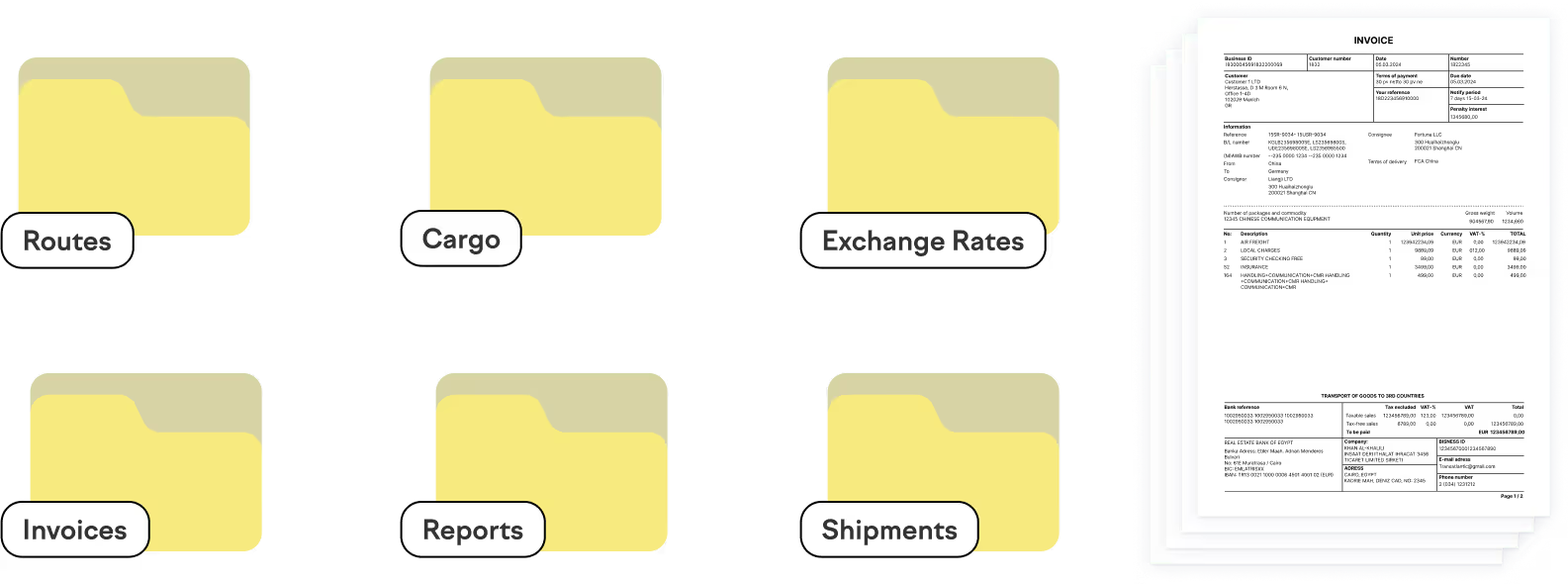
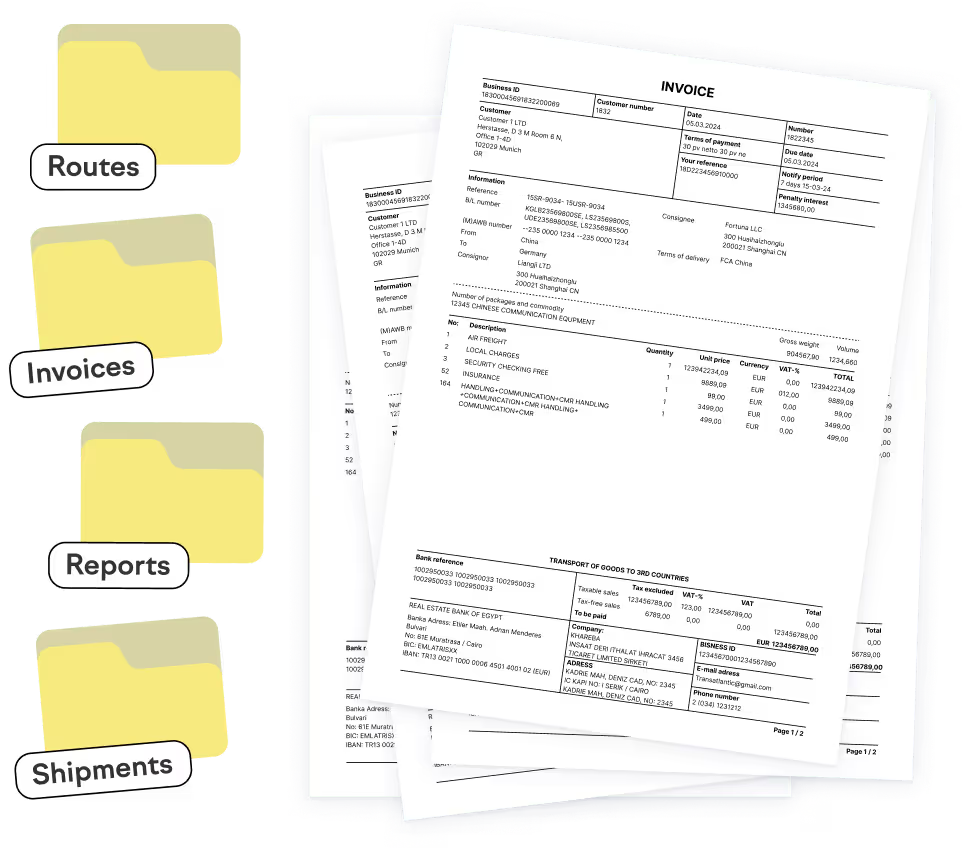
When we first met, all this data lived on printed sheets in folders stacked on managers’ desks. To calculate prices, they manually copied data into Excel or 1C. This slowed everything down, made remote work nearly impossible, and meant managers were literally carrying folders back and forth to handle orders.
We ran a series of deep-dive calls with the logistics team:
This gave us a clear process map, which became the foundation for the ERP’s interface logic.
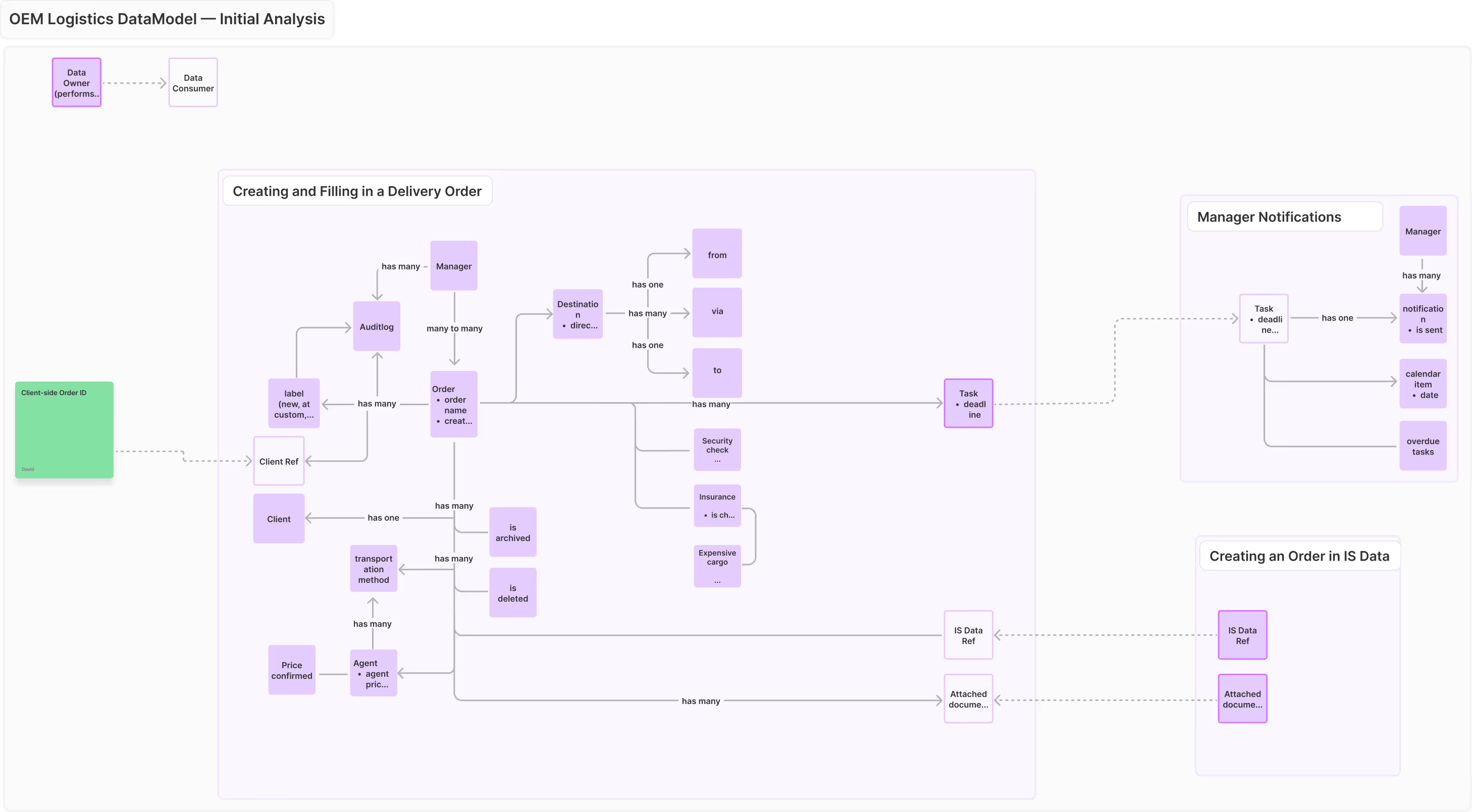
We designed the Order Card, a single view where every shipment begins.







Transportation company
IS# INV-0002098-DE





Created: 12/06/2024
Comment: Provide additional documents at customs





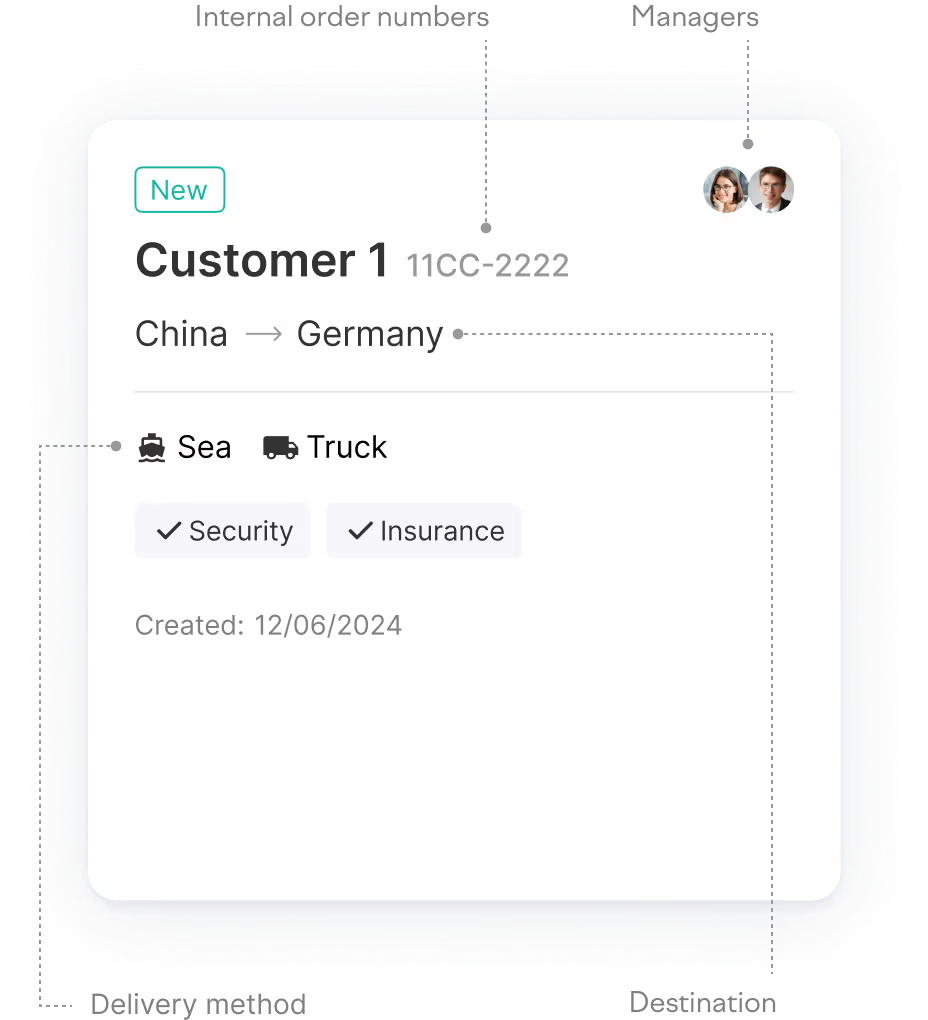
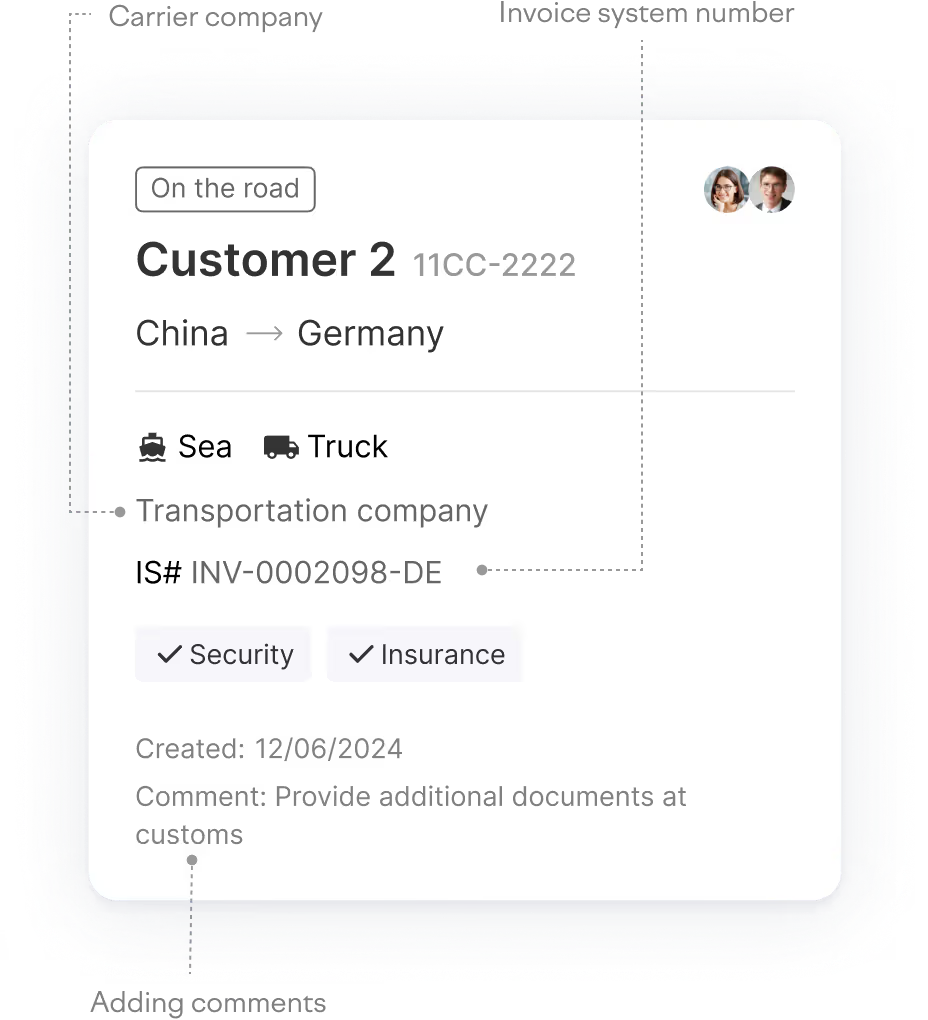



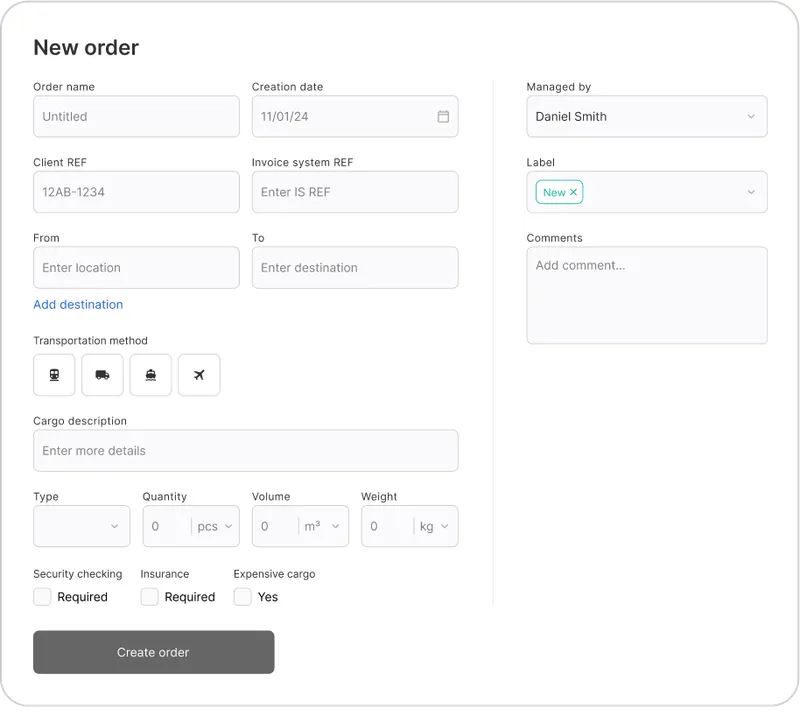

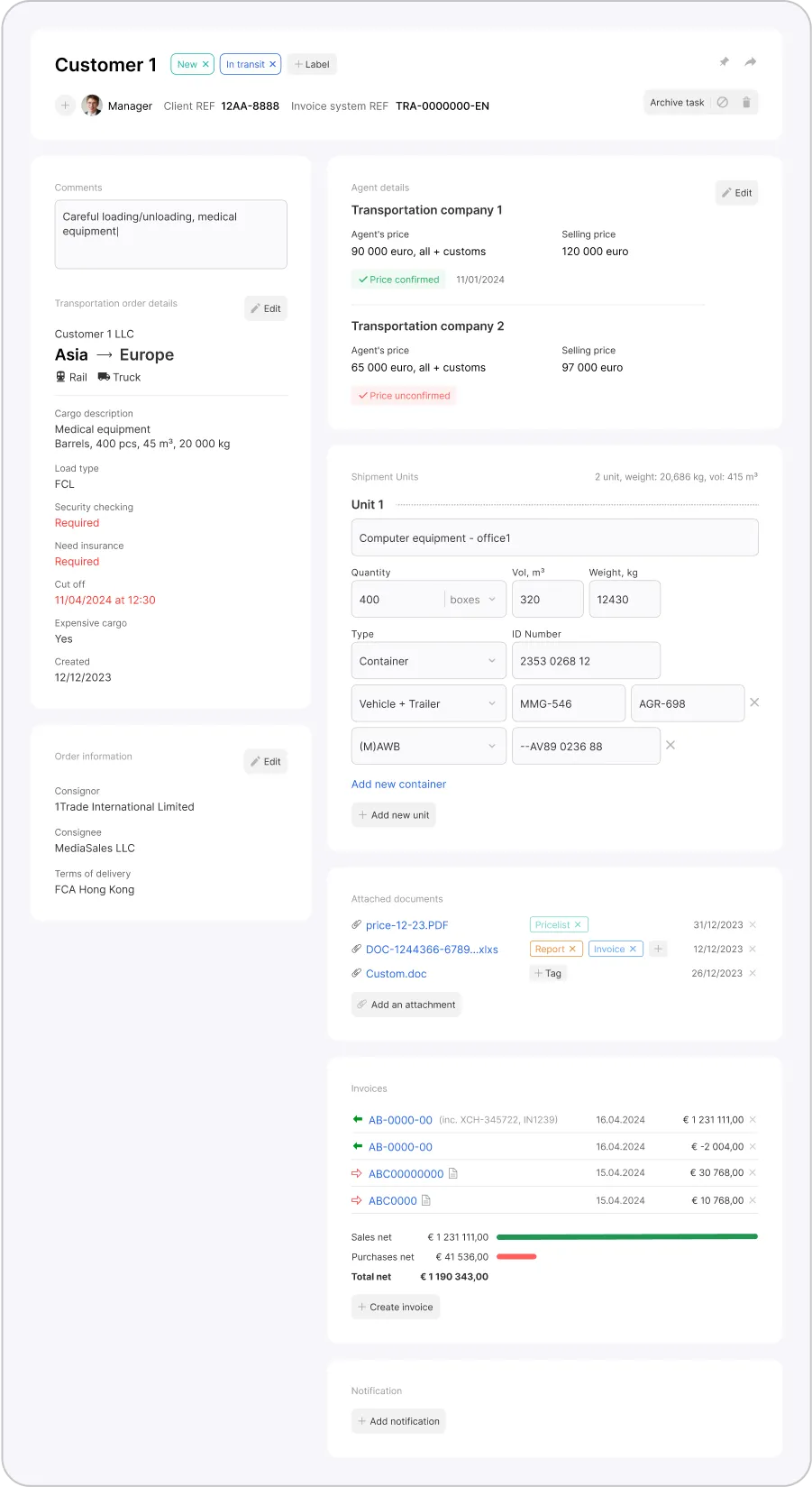
As details are added, the request grows into a full cargo order: client info, cargo details, documents, insurance, invoices, and more. All stored securely in the ERP, no more paper folders.
We also built the first dashboard, giving managers a real-time overview of all active orders.

Next, we automated invoicing. The ERP pulls order data and generates client invoices with all the right parameters.
We also created an analytics dashboard:
For the first time, managers could track their company’s financial health in one place.
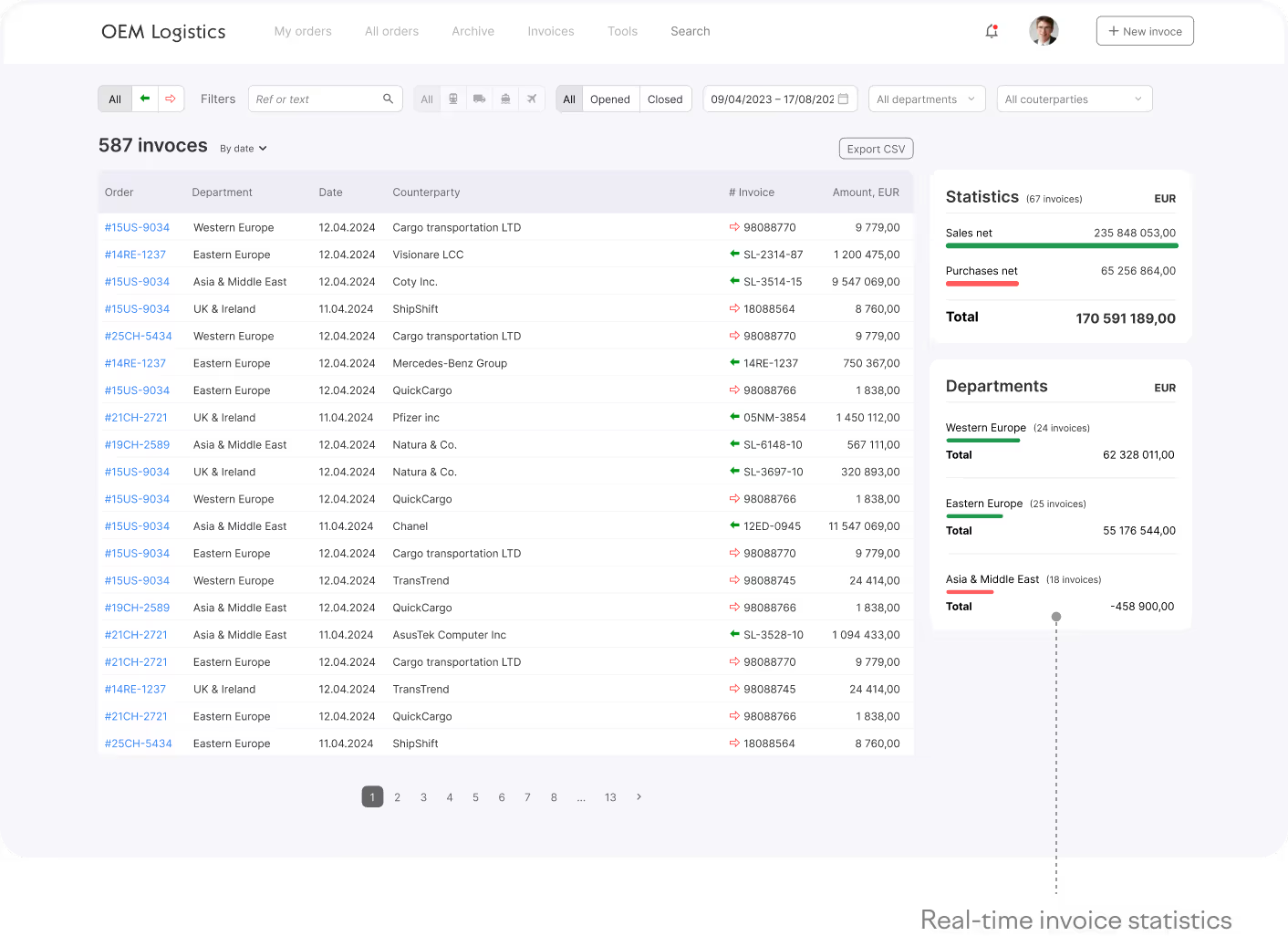

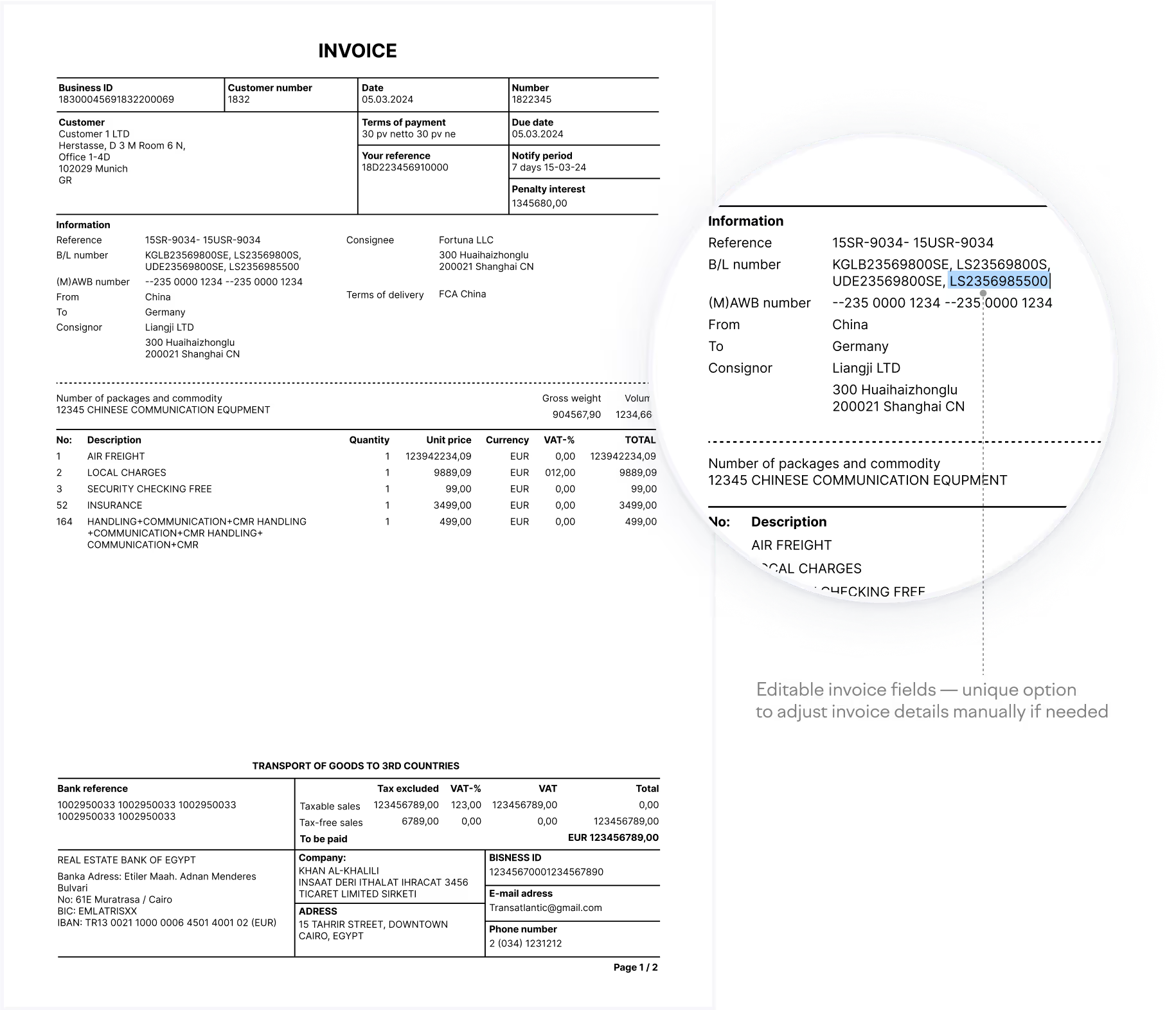
As soon as developers shipped the first version, the client started using it live. We worked side-by-side with them during rollout:
Because we structured design and approvals in a clear rhythm, feedback flowed smoothly, and the client felt in control of the process.
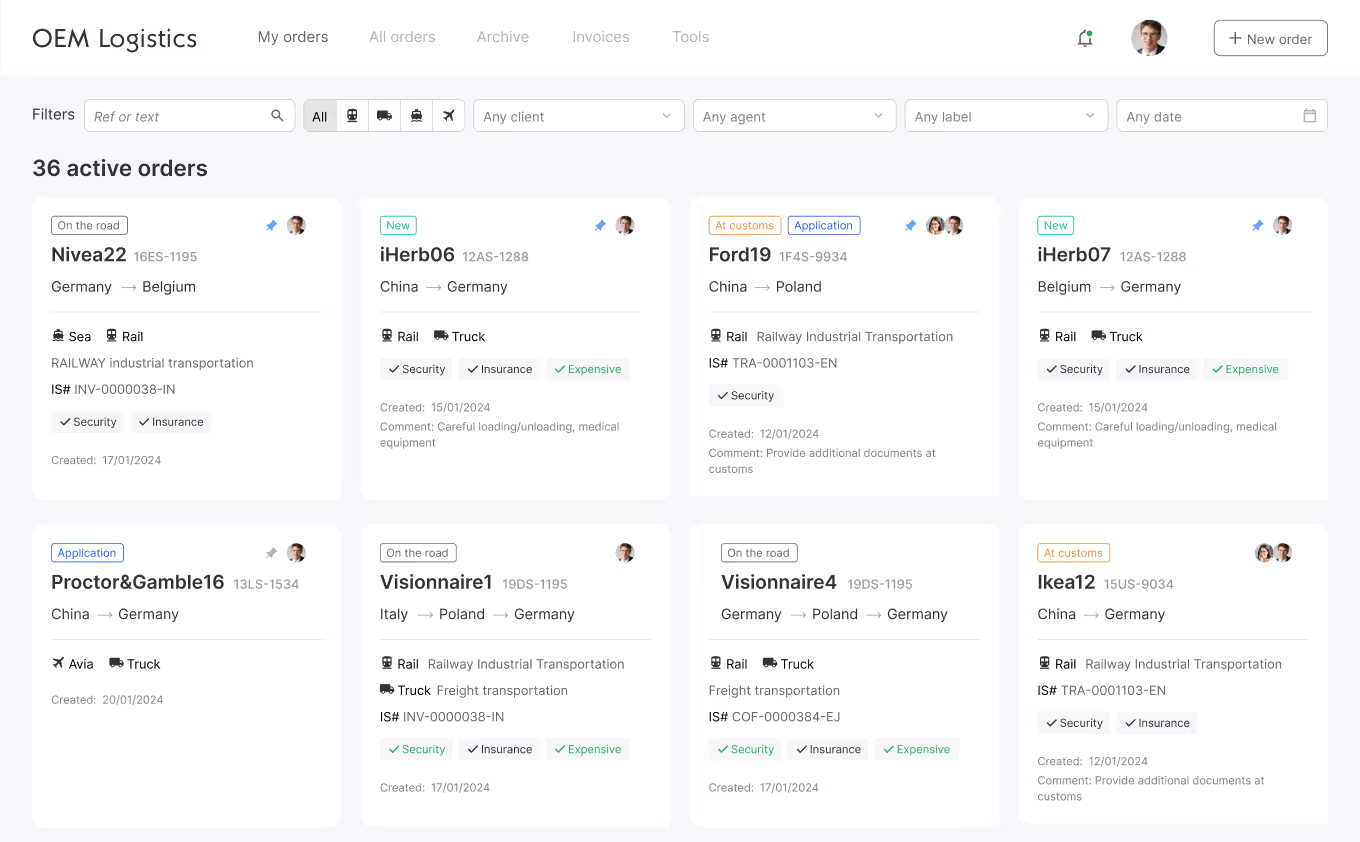


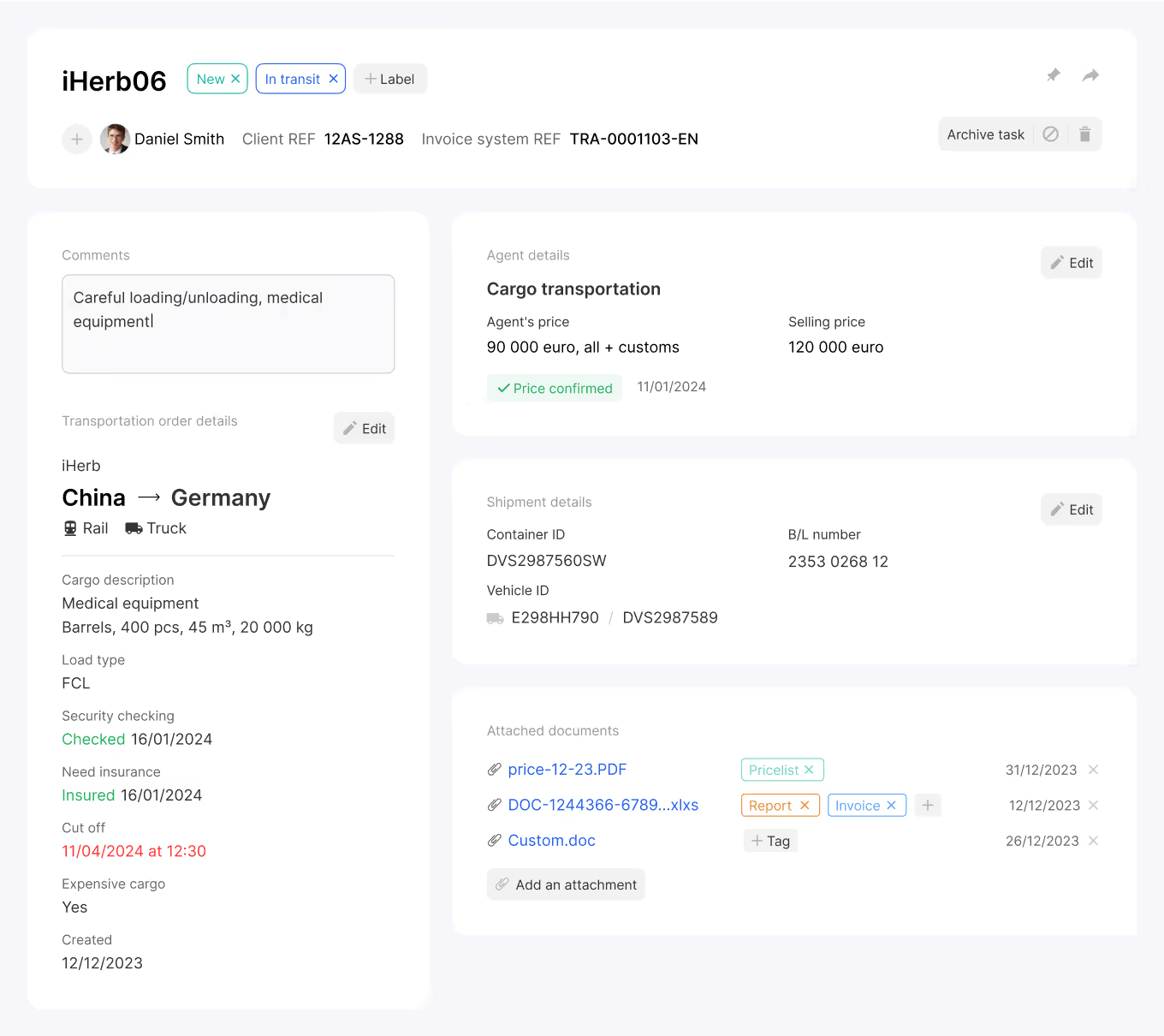
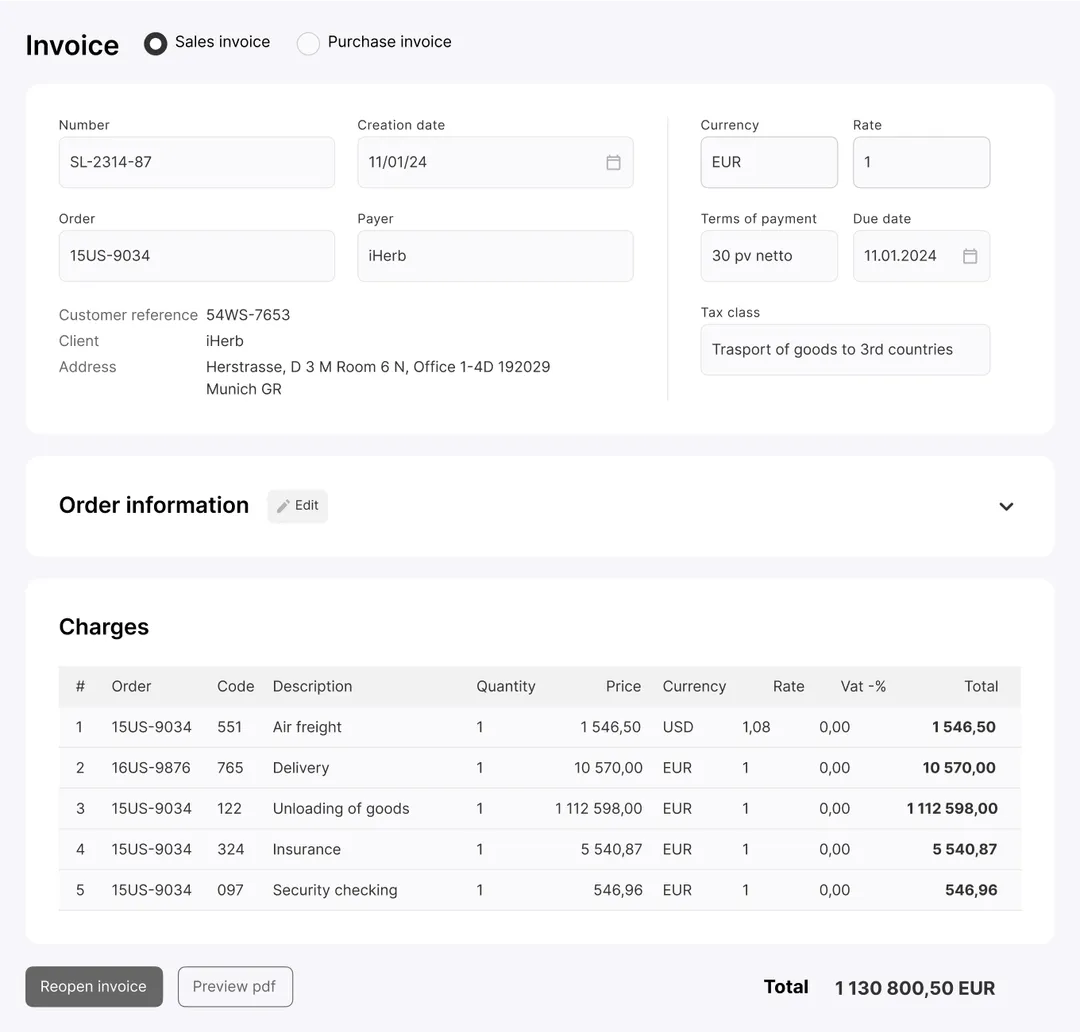
We listened to real users. Instead of pulling managers away from their work, we interviewed logistics staff who handle orders daily. The ERP fits their reality — not the other way around.
We built in feedback loops. Any gap between system logic and actual workflow was caught fast and corrected.
We iterated with agility. Some features only revealed their true shape after launch. We weren’t afraid to redesign when it made sense.